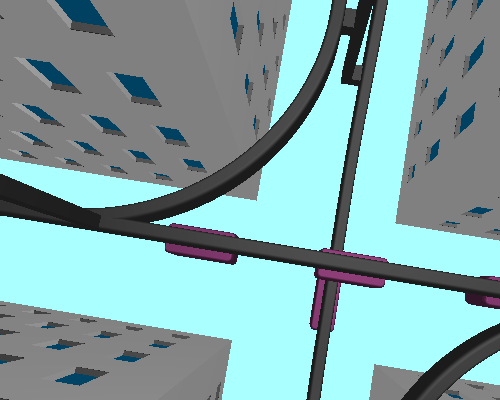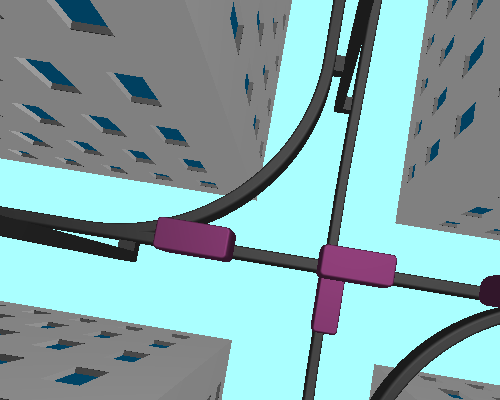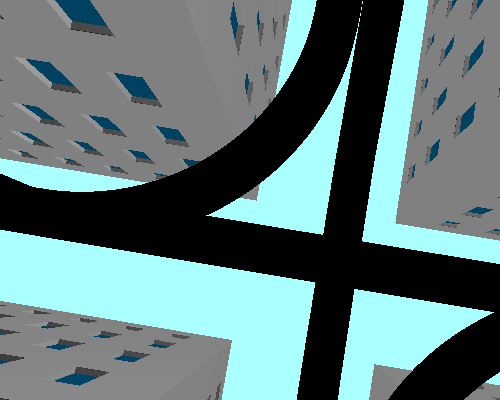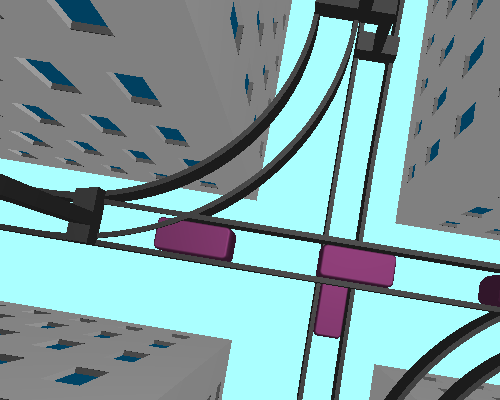This page deals with the issue of public acceptance of overhead PAT systems. Engineers can be persuaded by rational engineering arguments and accountants by economic arguments, but proposals for installing PAT systems seem to meet vociferous opposition from the public. Sometimes this seems to be based on a fear of anything new, but there is a real and understandable concern about cluttering the urban space with oppressive structures.
We need to confront the fact that PAT infrastructure will be intrusive and consider how this can be minimised by design. Would an uncluttered solid structure be less intrusive than a fussy looking truss which blocks less light? Are fewer bulkier support pillars better than more but slenderer ones?
There is a lot of debate about the relative visual impact of different guideway types, particularly between suspended and supported. The following figures attempt to make a comparison. The first figures shows how the overall height of the main variations compare:

The green area represents the cross-section of a PAT vehicle with dimensions roughly similar to ULTra, Vectus or 2GetThere. The blue area is a nominal cross-section of the guideway.
The ULTra-style guideway is a simple concrete path which will have a relatively large shadow. However the wheels run along the edges and the centre part could be open.
The both-sides configuration has the strength members are either side of the vehicle rather than above or below. The running surfaces are still below the vehicle projecting from the bottom of the side pieces.
The ultimate smallest height configuration would be to have a guideway within the height limits of the vehicles.
There are potential objections to a guideway that projects above roof level, particularly where one guideway crosses another. The following figures show how the overall height compares with a typical two story house.




In each case the lowest point on the system is 4m, the maximum height for a road vehicle in Europe.
Another objection is that the overhead structure would blot out the sky. The next four figures makes a comparison of these four systems looking straight up.




Note that the perspective is not very accurate, the point of view is lower than it should be. However, for a comparison it will serve.
All types of overhead guideway are going to be a major visual presence and the differences in intrusiveness is small.
The either side configuration is marginally the best because: